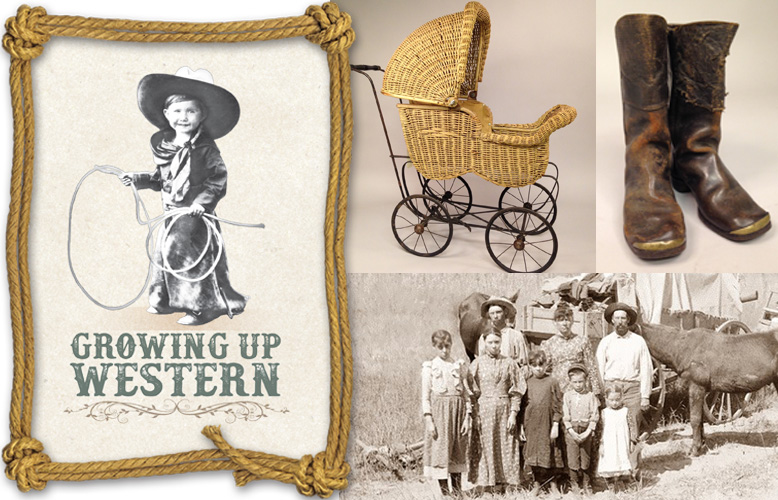Imagine what childhood in the High Desert was like a century ago, when young children were expected not only to go to school and do household chores, but often to work to help their families survive. This was a far different lifestyle from that of today’s tech-savvy youth. Growing Up Western, a new exhibit now open at the High Desert Museum depicts how children worked—and played—in the High Desert.
The exhibit, curated by Museum staff, will include historic photographs, artifacts and treasured toys. “The exhibit is a great way for adults and kids alike to discover what their lives would have been like had they been born in the 19th or early 20th century,” said Dr. Margaret Lee, the museum’s curator of western history. “Back then, it wasn’t unusual for a three-year-old to be put in charge of looking after younger siblings.”
Museum staff collected items over many years to create the exhibit, which will highlight the differences and similarities between growing up then and growing up today. A few of the items that will be featured are a replica of a child’s 1900 bedroom, a hand-sewn and hand-painted baptismal quilt from the 1890s, a beaded Plateau cradleboard and Chinese girl’s binding shoes.
There will be a section about children’s working lives, which will include a child’s pair of woolly chaps, a small saddle and a child-size rifle.
According to Dr. Lee, “You don’t think of children needing work gear such as a rifle, but here in the High Desert, children often had to help hunt for dinner to feed their families.”
But even back then, with all the responsibility weighing on their shoulders, children found ingenious ways to integrate play into their everyday lives. The exhibit will include toys and puzzles children played with a century ago. High Desert Museum Executive Director Dr. Dana Whitelaw said, “Seeing the photographs of children working and playing in addition to the artifacts brings to life how challenging life was back then and the indomitable spirit of children of the West.”
The exhibit runs through July 26, 2015.
Exhibit sponsored by Nosler,Inc., the Robert and Janice Schock Fund of the Oregon Community Foundation and the James F. and Marion L. Miller Foundation.

